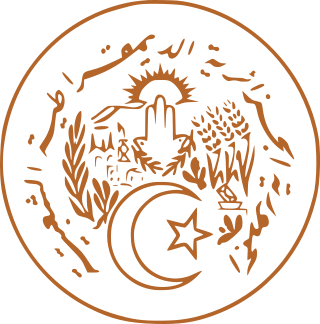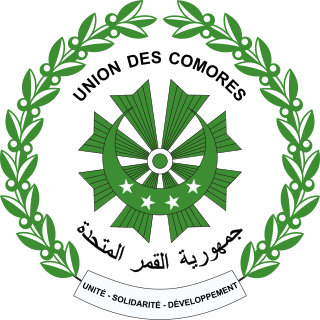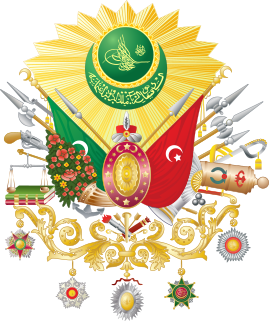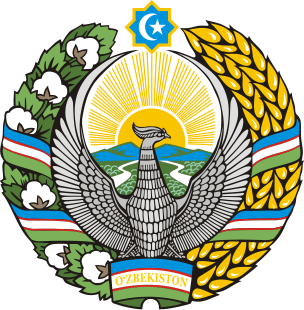 W
WThe national emblem of Algeria is the seal used by the government, as other states use coats of arms.
 W
WThe coat of arms of Algiers, made by Algeria–Turkey relations, was created after the country's independence, it shows a fortress, which symbolizes the Casbah, and a boat which symbolize the Algerian fleet, vital to the country's economy in older times, as well as two lions, which can be seen in Bab Azzoun, one of the gates of the city. The crescent symbolizes Islam, the state religion, the feather to symbolize scientific and cultural development. The sheaf of corn symbolizes agriculture, while the wheel symbolizes industry.
 W
WThe national seal of the Comoros has the crescent found on the national flag in the center; within this crescent are the four stars found on the flag. A sun with rays extended is right above the crescent. Around the focal point, the name of the nation is written in both French and Arabic. The border is composed of two olive branches, with the national motto at the bottom in French.
 W
WThe flag and the coat of arms of Kelantan are state symbols of Kelantan, Malaysia. Like the flag of Kedah, the Kelantanese flag is red with a single charge from Kelantan's coat of arms, albeit partially.
 W
WSince 2011, Libya currently does not have an official coat of arms. The Constitutional Declaration issued by the National Transitional Council on August 2011 defines the flag of Libya, but does not make any provisions for a coat of arms.
 W
WThe Coat of arms of Malacca is the official emblem of the Malaysian state of Malacca. The various colours on the arms indicate that the state is part of Malaysia. The star and crescent, which stand on the crest represents Islam, the official religion of the state.
 W
WThe Maldivian National Emblem consists of a coconut palm, a crescent, and two criss-crossing National Flags with the traditional Title of the State.
 W
WThe seal of Mauritania is based on the national flag of Mauritania, which was adopted on 15 August 2017. It contains red, green, and gold emblems. The green symbolizes Islam, the major religion in the nation, the gold represents the sands of the Sahara desert, and the red represents the bloodshed of the people that fought for independence. The crescent and star are also emblems of Islam. The edges read "Islamic Republic of Mauritania" in Arabic and French.
 W
WThe coat of arms of Cyprus are two: the Republic of Cyprus one and the Northern Cyprus one.
 W
WEvery sultan of the Ottoman Empire had his own monogram, called the tughra, which served as a royal symbol. A coat of arms in the European heraldic sense was created in the late 19th century. Hampton Court requested from the Ottoman Empire a coat of arms to be included in their collection. As the coat of arms had not been previously used in the Ottoman Empire, it was designed after this request, and the final design was adopted by Sultan Abdul Hamid II on 17 April 1882.
 W
WThe state emblem of Pakistan was adopted in 1954 and symbolizes Pakistan's ideological foundation, the basis of its economy, its cultural heritage and its guiding principles.
 W
WThe coat of arms of Tunisia displays a Punic galley along with a lion holding a sword, and a weighing scale. In the centre, just under the ship, is the national motto written in Arabic: Freedom (حرية) - Order (نظام) - Justice (عدالة). The central emblem of the national flag is seen above the shield. The background is gold in all sections.
 W
WTurkey has no official national emblem, but the crescent and star design from the national flag is in use as the de facto national emblem on Turkish passports, Turkish identity cards and at the diplomatic missions of Turkey.
 W
WThe State Emblem of Turkmenistan was created after Turkmenistan gained independence from the Soviet Union in 1991. Like other post-Soviet republics whose symbols do not predate the October Revolution, the current emblem retains some components of the Soviet one such as cotton, wheat and rug. The eight-point green starburst with golden edges features in its center a red circular disc which carries sheaves of wheat, five carpet guls, and centered upon that a smaller blue circle with a lifelike depiction of former President Saparmurat Niyazov's pet Akhal-Teke horse Yanardag, a source of pride for the Turkmen people. A round variant of the emblem was used from 1992 until 2003, when President Saparmurat Niyazov proposed to change its appearance and said that the ancient Turkmen octagon has been considered to be a symbol of abundance, peace and tranquility.
 W
WThe state emblem of Uzbekistan was formally adopted on July 2, 1992 by the newly establish Republic of Uzbekistan. It bears many similarities to the emblem of the previous Uzbek SSR, which Republic of Uzbekistan succeeded. Like other post-Soviet republics whose symbols do not predate the October Revolution, the current emblem retains some components of the Soviet one. Prior to 1992, Uzbekistan had an emblem similar to all other Soviet Republics, with standard communist emblems and insignia.
 W
WThe Coat of arms of the Sahrawi Arab Democratic Republic is a symbol created by the Polisario Front, the national liberation movement of Western Sahara. The Polisario Front proclaimed the Sahrawi Arab Democratic Republic on February 27, 1976, and both the flag and the coat of arms were adopted as state symbols.